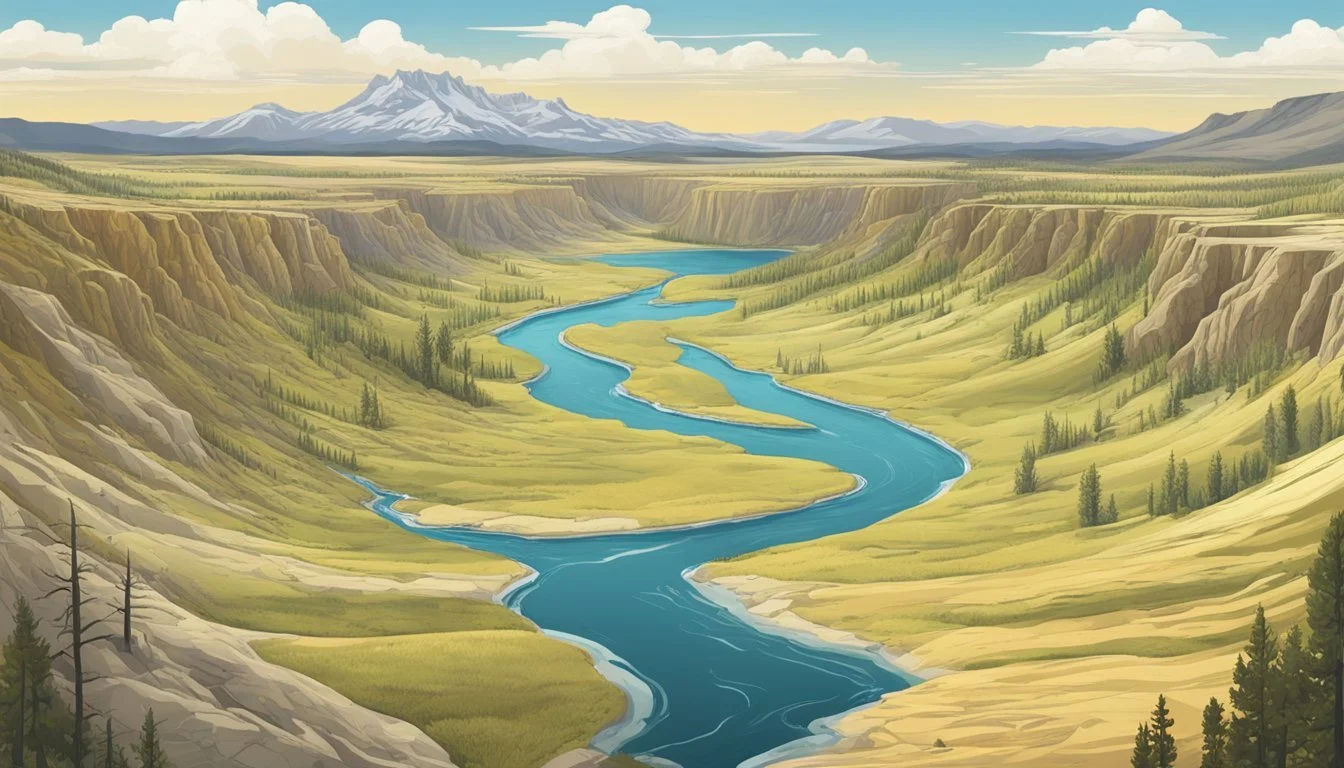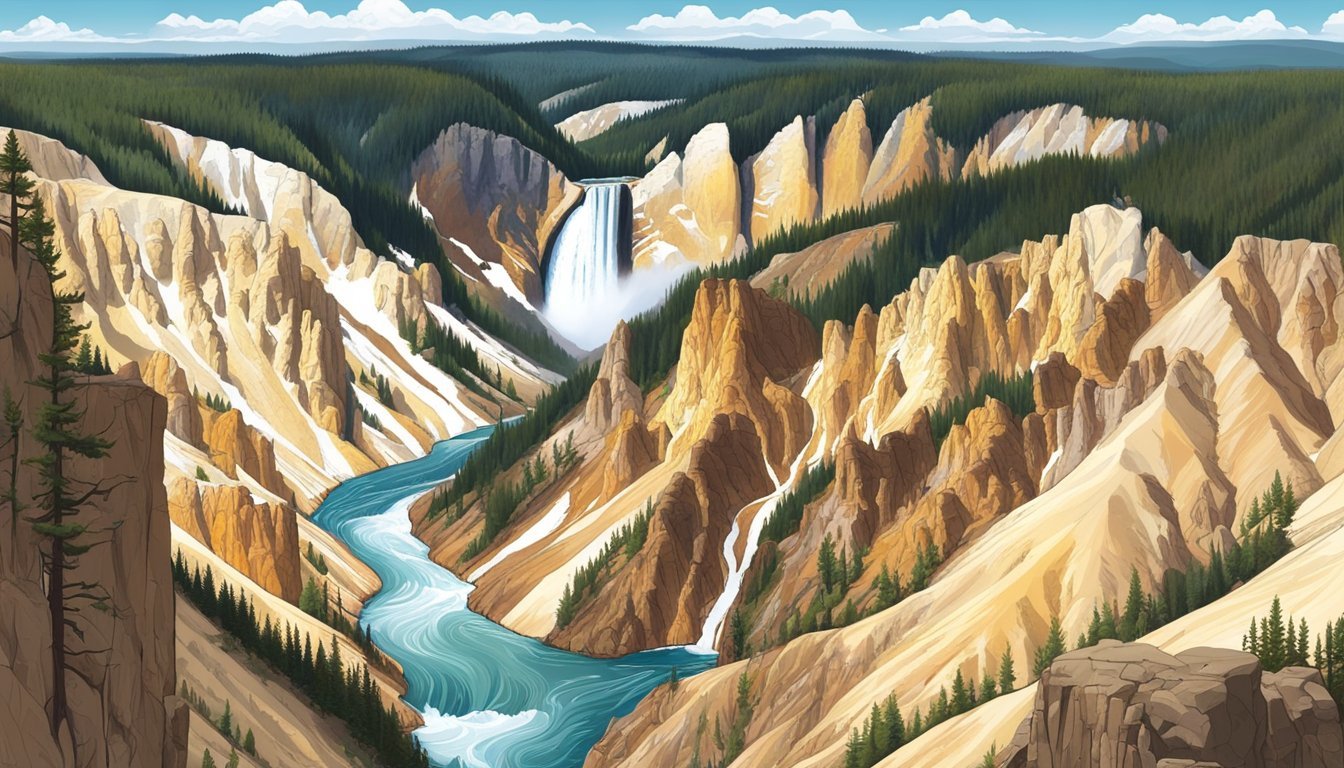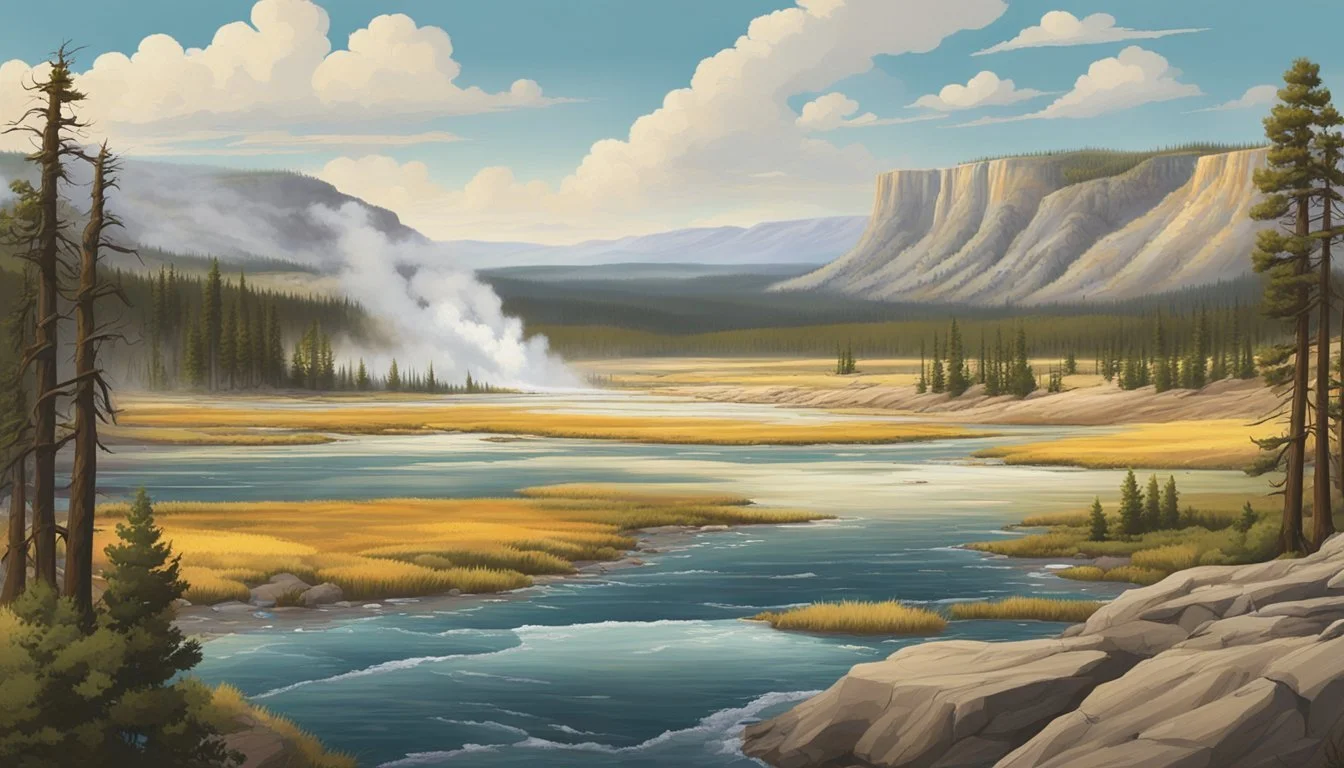Land as the Central Conflict: Yellowstone's Core Struggle Drives Western Drama
Yellowstone, the hit TV series created by Taylor Sheridan for Paramount Network, has captivated audiences with its gripping portrayal of power struggles in rural Montana. At the heart of the show lies a fierce battle over land ownership, echoing real-life conflicts that have shaped the American West for generations.
The Dutton family's fight to maintain control of their vast ranch serves as the central conflict driving the series' narrative. This struggle reflects the complex interplay between legacy, power, and the changing face of the West. As developers, Native American tribes, and government entities vie for control of valuable land, viewers are drawn into a world where property represents far more than just acreage.
Yellowstone's depiction of land disputes resonates with many viewers familiar with the ongoing debates surrounding land use, conservation, and development in the western United States. By weaving these themes into a compelling drama, the show offers a nuanced look at the cultural and economic forces shaping modern Montana, inviting audiences to consider the true cost of progress in America's last frontier.
Historical Context of Land Disputes
Land disputes in the Yellowstone region have shaped the area's history for generations. These conflicts reflect broader tensions over resource control and cultural preservation in the American West.
1838 and the Formation of Yellowstone
In 1838, the U.S. government began exploring the Yellowstone area. This marked the start of increased interest in the region's natural resources.
Native American tribes had inhabited the land for thousands of years prior to European exploration. Their displacement became a contentious issue as settlers moved westward.
The formation of Yellowstone National Park in 1872 added another layer to land disputes. It was the world's first national park, setting aside over 2 million acres for preservation.
This decision sparked debates about land use and ownership that continue to this day.
Ranching and Settlement in Montana
Montana's ranching history began in earnest in the 1860s. Cattle drives from Texas brought longhorns to the territory, kickstarting the industry.
The arrival of the Northern Pacific Railroad in 1883 accelerated settlement and ranching expansion. This year is often cited as a turning point in Montana's development.
Large ranches emerged, some covering hundreds of thousands of acres. These expansive properties became central to Montana's economy and culture.
Conflicts arose between ranchers, farmers, and Native American tribes over land and water rights. These disputes often turned violent, shaping the region's reputation as the "Wild West".
The Dutton Family Legacy
The fictional Dutton family in "Yellowstone" represents a common Montana narrative: multi-generational ranching dynasties.
Many real Montana ranches have histories dating back to the late 19th century. These families faced numerous challenges to maintain their land over decades.
Economic pressures, changing land use policies, and environmental concerns have all threatened traditional ranching lifestyles.
The struggle to preserve large ranches against modernization and development is a key theme in both reality and the "Yellowstone" series.
John Dutton's character embodies the determination of many Montana ranchers to protect their legacy and way of life.
Character Dynamics and Beliefs
The characters in Yellowstone embody diverse perspectives on land ownership and loyalty. Their beliefs and relationships create a complex web of motivations that drive the central conflict over the Yellowstone Ranch.
John Dutton's Stewardship
John Dutton views the Yellowstone Ranch as his sacred duty to protect. He sees himself as a steward of the land, preserving it for future generations. This belief fuels his relentless efforts to fend off developers and rival interests.
John's commitment to the ranch shapes his relationships with family and allies. He often prioritizes the land over personal connections, creating tension with his children.
His leadership style blends traditional ranching values with calculated political maneuvering. John isn't afraid to use force or manipulation to defend his property.
Beth Dutton's Ruthlessness
Beth Dutton channels her fierce loyalty to her father and the ranch into aggressive business tactics. She uses her financial acumen and sharp wit as weapons against the family's enemies.
Her ruthless approach stems from a deep-seated need to prove herself and protect the Dutton legacy. Beth often clashes with those who threaten the ranch, employing underhanded methods to achieve her goals.
Despite her hard exterior, Beth's actions are driven by a complex mix of family loyalty and personal ambition. Her relationship with Rip Wheeler adds depth to her character, revealing a softer side beneath her tough facade.
Kayce Dutton's Struggle
Kayce Dutton finds himself torn between his Native American wife's culture and his family's ranching heritage. This internal conflict reflects the larger tensions surrounding land rights in Montana.
As a former Navy SEAL, Kayce brings a unique skill set to ranch operations. He often serves as a bridge between the Dutton family and the nearby reservation, navigating complex cultural and political landscapes.
Kayce's struggle for identity impacts his role within the family business. He must balance his father's expectations with his own desires for independence and a simpler life.
Rip Wheeler's Loyalty
Rip Wheeler embodies unwavering loyalty to the Dutton family, particularly to John. His dedication stems from a sense of gratitude for being taken in as an orphaned teen.
As the ranch foreman, Rip enforces John's will with a mix of respect and intimidation. He's not afraid to use violence when necessary to protect Dutton interests.
Rip's relationship with Beth adds complexity to his character. Their romance intertwines personal feelings with ranch politics, creating both strength and vulnerability in their roles.
Socio-Economic Factors
The struggle for land in Yellowstone is deeply intertwined with complex socio-economic factors that shape the region. These factors create tensions between different groups and interests, influencing the ongoing conflicts over land use and ownership.
The Influence of Tourism
Tourism plays a significant role in Yellowstone's economy. The national park attracts millions of visitors annually, generating substantial revenue for local businesses and the surrounding communities. This influx of tourists creates jobs and stimulates economic growth in the region.
However, the tourism industry also puts pressure on local resources and infrastructure. The seasonal nature of tourism leads to fluctuations in employment and income for many residents. Additionally, the increasing number of visitors raises concerns about the preservation of natural habitats and wildlife within the park.
Tourism has also led to the development of new businesses and attractions outside the park boundaries, further impacting land use and property values in nearby areas.
Bozeman and Urban Expansion
Bozeman, Montana has experienced rapid growth in recent years, driven by its proximity to Yellowstone and its appeal as a mountain town. This urban expansion has significant implications for the surrounding rural areas and ranching communities.
The city's growth has led to:
Rising property values
Increased demand for housing
Expansion of commercial and residential developments
These changes have put pressure on traditional land uses, particularly ranching. Some ranchers have sold their land to developers, while others struggle to maintain their operations in the face of rising costs and changing demographics.
The influx of new residents, often with different values and priorities, has also contributed to cultural shifts in the region.
Ranchers vs. Conservationists
The conflict between ranchers and conservationists represents a fundamental divide in land use philosophies. Ranchers, who have often worked the land for generations, view it as a resource to be utilized for economic benefit. They rely on grazing rights and access to public lands to maintain their livelihoods.
Conservationists, on the other hand, prioritize the preservation of natural ecosystems and wildlife habitats. They advocate for stricter land use regulations and the expansion of protected areas.
Key points of contention include:
Grazing rights on public lands
Wildlife management, particularly regarding predators like wolves
Water rights and usage
These differing perspectives have led to legal battles, political lobbying, and ongoing debates about the future of land management in the Yellowstone region. The struggle to balance economic interests with environmental conservation remains a central challenge in resolving land conflicts.
Wildlife and Conservation Efforts
Yellowstone's diverse wildlife and conservation initiatives spark intense debates. Efforts to protect iconic species often clash with ranching interests and disease concerns.
Bison and Brucellosis
Yellowstone's bison herd, numbering around 5,000, faces ongoing management challenges. The primary concern is brucellosis, a bacterial disease that can spread to cattle. To prevent transmission, bison are often hazed back into the park or culled when they migrate outside park boundaries in winter.
Conservation groups advocate for expanded bison habitat beyond the park. They argue culling is unnecessary and harmful to the species' genetic diversity. Ranchers, however, fear economic losses from potential brucellosis outbreaks in their herds.
Recent efforts focus on developing more effective brucellosis vaccines and expanding tolerance zones for bison outside the park. These initiatives aim to balance conservation goals with ranching interests.
Wolves in Modern Yellowstone
Wolf reintroduction in 1995 dramatically altered Yellowstone's ecosystem. The predators helped control elk populations, leading to increased vegetation growth and biodiversity. This "trophic cascade" effect garnered worldwide attention.
Today, about 100 wolves roam the park. Their presence draws wildlife enthusiasts and boosts local tourism. However, wolves occasionally prey on livestock outside park boundaries, creating tension with ranchers.
Compensation programs reimburse ranchers for confirmed wolf kills. Some areas implement non-lethal deterrents like fladry and guard dogs. Debates continue over wolf hunting quotas in states bordering Yellowstone.
Ranching Culture and Predator Control
Traditional ranching practices often conflict with wildlife conservation efforts. Predator control remains a contentious issue, especially regarding wolves and grizzly bears.
Some ranchers view large predators as threats to their livelihoods. They advocate for more flexible hunting regulations and increased predator management. Conservation groups argue these practices harm ecosystem balance and wildlife populations.
Collaborative initiatives seek middle ground. Range riders help protect livestock from predators. Wildlife-friendly fencing allows animal migration while securing cattle. These efforts aim to preserve ranching culture while supporting wildlife conservation in the Greater Yellowstone Ecosystem.
Legal and Property Challenges
The Yellowstone series explores complex legal and property issues surrounding ranch ownership in the modern American West. These conflicts drive much of the show's dramatic tension and highlight real-world challenges facing rural communities.
Land Ownership Debates
The Dutton family's struggle to maintain control of their vast ranch forms the heart of Yellowstone's conflict. Their property faces constant threats from developers, neighboring tribes, and government entities seeking to acquire or regulate the land. The show depicts legal battles over eminent domain, zoning changes, and mineral rights.
Historic treaties with Native American tribes add another layer of complexity to land ownership claims. The series examines how past injustices and broken agreements continue to impact present-day property disputes in the region.
Property Rights and Land Use
Yellowstone highlights tensions between private property rights and public land use. The Duttons fiercely defend their right to use their land as they see fit, often clashing with environmental regulations or conservation efforts. Water rights emerge as a critical issue, with access to rivers and aquifers becoming increasingly contentious.
The show explores legal gray areas around easements, grazing permits, and resource extraction on ranch lands. It depicts how changing land use policies can threaten traditional ranching practices and livelihoods.
The Future of Rural Life
Legal and property challenges in Yellowstone raise broader questions about the sustainability of rural ways of life in the modern era. The series examines how economic pressures, changing demographics, and evolving land use priorities impact ranching communities.
Zoning battles between agricultural interests and residential developers feature prominently. The show also touches on inheritance laws and estate planning challenges unique to large landholders. These legal and property issues ultimately reflect deeper cultural conflicts over the identity and future of the American West.
Cultural Impact
Yellowstone has profoundly shaped perceptions of the American West and ranch life. The show's popularity has influenced media portrayals, public understanding, and local identities in Western states.
Yellowstone's Representation of the American West
Yellowstone presents a romanticized yet gritty depiction of modern ranching life. The show highlights the rugged beauty of Montana's landscapes while exploring the challenges faced by ranching families. It portrays conflicts between traditional ways of life and encroaching development.
The Dutton family's struggles resonate with viewers who feel a connection to rural values. Yellowstone's representation has reignited interest in Western heritage and cowboy culture.
The series also touches on issues like land rights, tribal sovereignty, and environmental conservation. These themes reflect real tensions in Western states today.
Media Portrayal and Public Perception
Yellowstone's popularity has influenced how media outlets cover ranching and Western issues. The show has sparked renewed interest in Western-themed entertainment across various platforms.
Public perceptions of ranch life have been shaped by the glamorized portrayal in Yellowstone. This has led to increased tourism in areas like Paradise Valley, Montana, where the show is set.
The series has also drawn criticism for perpetuating stereotypes and oversimplifying complex regional issues. Some argue it presents an overly nostalgic view of the West that doesn't fully capture modern realities.
The Show's Influence on Local Identity
Yellowstone has had a significant impact on communities in Montana and other Western states. Local businesses have capitalized on the show's popularity, offering Yellowstone-themed tours and merchandise.
The influx of tourists and aspiring ranchers inspired by the show has led to both economic benefits and challenges for longtime residents. Property values have increased in some areas, making it harder for working ranchers to maintain their way of life.
Yellowstone's portrayal of ranching culture has also sparked debates about authenticity and representation among local communities. While some embrace the attention, others worry about the oversimplification of their lifestyle and values.






